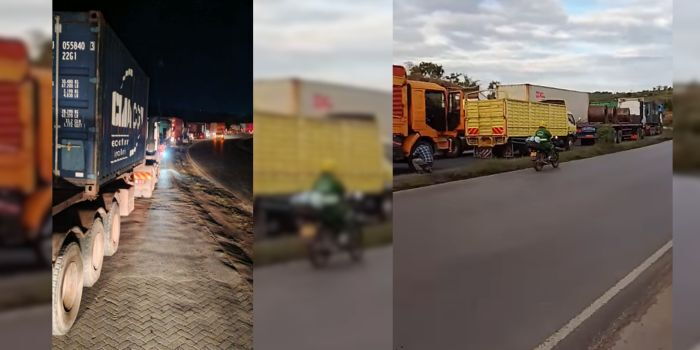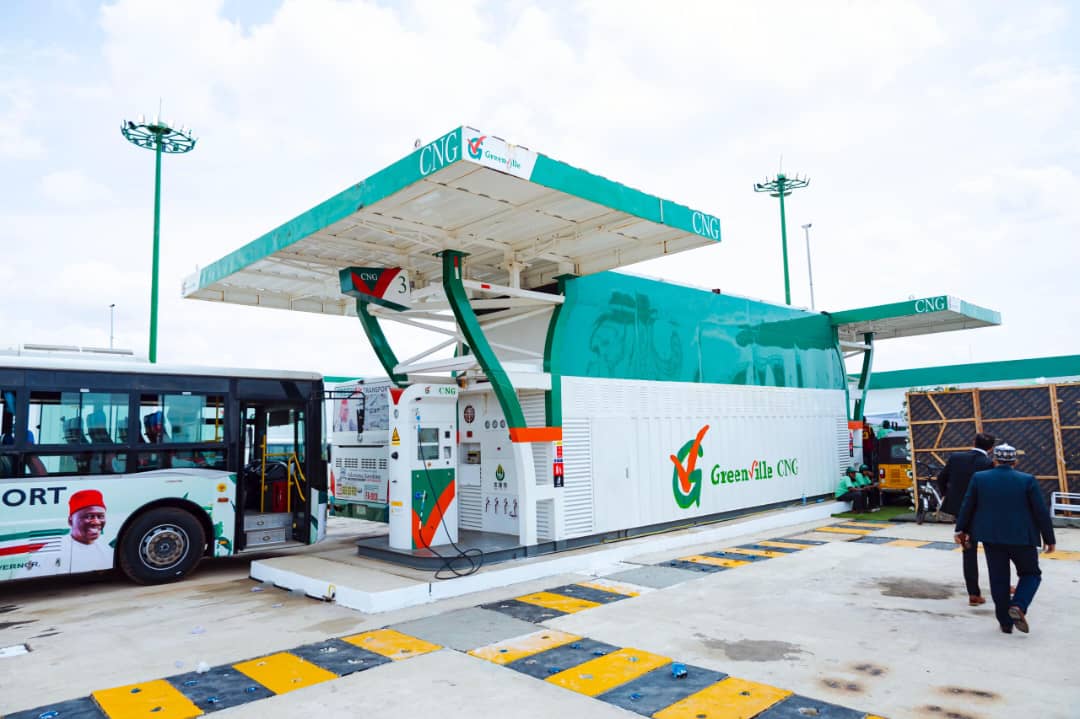Seven states spend 190% of revenue on loan repayment
Seven states spent an average of 190 per cent of their Internally Generated Revenue on debt servicing in the first quarter of 2025, a development that shows the worsening fiscal strain facing subnational governments.
Data from the Q1 2025 Budget Implementation Reports of Bayelsa, Adamawa, Benue, Niger, Kogi, Taraba, and Bauchi states show that debt service expenditure in each of the states exceeded their IGR, in some cases by more than 300 per cent.
The trend, when compared with figures from the preceding quarter (Q4 2024), also reflects a sharp quarter-on-quarter surge in debt service cost, which rose by approximately 51 per cent across the states reviewed.
The PUNCH observed that seven Nigerian states spent a total of N98.71bn on debt servicing in Q1 2025, marking a sharp increase of N33.48bn or 51 per cent compared to the N65.24bn recorded in the previous quarter.
The data further revealed that the combined IGR for the seven states rose modestly from N44.05bn in Q4 2024 to N51.92bn in Q1 2025, indicating an increase of N7.87bn. However, this marginal revenue improvement was outpaced by a surge in debt repayment obligations, highlighting the widening fiscal gap at the subnational level.
Disbursements from the Federation Account Allocation Committee to the affected states increased from N360.75bn in Q4 2024 to N419.86bn in Q1 2025, representing a rise of N59.11bn within three months. The increase shows the continued dependence of states on federal transfers to meet not only operational costs but also mounting debt obligations.
In Q1 2025, the seven states required a combined total of N46.80bn from their FAAC allocations to fully cover the shortfall between IGR and debt service.
This amount represents approximately 11.15 per cent of their total FAAC inflows of N419.86bn during the period
In Benue State, debt service costs rose from N1.99bn in Q4 2024 to N21.40bn in Q1 2025, while IGR improved from N1.98bn to N5.18bn within the same period. This means that debt service in the first quarter accounted for 413 per cent of the state’s IGR and 31.6 per cent of total expenditure. The state relied on at least N16.22bn from its FAAC allocation of N58.71bn to meet the shortfall.
Kogi State reported a Q1 2025 IGR of N9.63bn but spent N23.88bn on debt servicing, equivalent to 248 per cent of its IGR. In the preceding quarter, debt service stood at N10.17bn against an IGR of N7.86bn.
The state received N55.41bn from FAAC and recorded total expenditure of N110.13bn, of which 21.7 per cent was used for debt repayment. The Kogi State Government recently said that it has liquidated a total debt of N98.8bn since assuming office 15 months ago.
The State Commissioner for Finance and Economic Planning, Ashiru Idris, disclosed this during a briefing with journalists following the Executive Council meeting held at the Council Chambers, Government House, Lokoja.
The commissioner explained that the debts settled include liabilities dating back to the administration of Alhaji Ibrahim Idris, as well as the N50bn bailout fund granted to the administration of Idris Wada.
“So far, this administration, under the leadership of Alhaji Ahmed Usman Ododo, has cleared a total of N98.8bn inherited from previous administrations, including the N50bn salary bailout granted to Captain Idris Wada’s administration,” he stated.
Idris attributed this achievement to a significant increase in internally generated revenue. “This success was made possible through the proactive efforts of the Chief Servant of our state, Alhaji Ahmed Usman Ododo, who empowered the Kogi State Inland Revenue Generation Agency with the mandate to enhance the state’s revenue generation,” he added.
However, existing data shows that the state’s IGR cannot fully cover its debt service costs.
Adamawa State generated N4.07bn in IGR in Q1 2025 but recorded debt servicing of N8.42bn, representing 206.9 per cent of IGR and 20.7 per cent of the N40.77bn spent in the quarter. The state relied on at least N4.35bn from its FAAC allocation of N37.03bn to meet debt commitments.
While debt service declined slightly from N8.71bn in Q4 2024, the drop in IGR from N4.61bn further exposed the state’s fiscal fragility.
Bayelsa State spent N13.55bn on debt servicing in Q1 2025, exceeding its IGR of N12.55bn by 107.9 per cent. Although FAAC inflows of N120.55bn were sufficient to cover the gap, the data points to a consistent pattern of IGR insufficiency.
Debt servicing constituted 6.1 per cent of the state’s total Q1 expenditure of N221.54bn. In Q4 2024, Bayelsa had spent N11.98bn on debt servicing, against an IGR of N10.05bn, representing 119.2 per cent.
In Niger State, debt servicing stood at N12.43bn in Q1 2025 compared to an IGR of N12.13bn, meaning 102.4 per cent of local revenue was used to repay debt.
While this was an improvement from Q4 2024, when IGR was N5.44bn and debt service was N9.27bn, the state still required N296m in FAAC support to cover its repayment obligations. Debt service accounted for 23.2 per cent of the N53.51bn spent in the period.
Taraba State generated only N3.38bn internally in Q1 2025 but spent N7.83bn on debt servicing, equating to 232 per cent of IGR. Debt repayment made up 19.3 per cent of the state’s total expenditure of N40.47bn, and it required at least N4.45bn of its N52.39bn FAAC allocation to close the gap.
In Q4 2024, the state had spent N6.43bn on debt servicing against an IGR of N5.80bn, showing a deterioration in its revenue capacity.
Bauchi State reported an IGR of N4.97bn in Q1 2025, with debt servicing at N11.20bn, amounting to 225 per cent of its locally generated revenue. The state needed N6.23bn from its N47.23bn FAAC inflow to meet the shortfall.
Debt service made up 11.6 per cent of the total expenditure of N96.84bn. In Q4 2024, Bauchi generated N8.31bn and spent N16.68bn on debt service, a slightly better performance relative to IGR but a worse financial position overall due to declining revenue.
Collectively, the seven states generated N51.91bn in IGR in Q1 2025 and spent N98.36bn on debt servicing, approximately 190 per cent of what they earned internally. This figure represents a significant rise from the N65.26bn spent on debt repayment in Q4 2024, despite the modest growth in IGR.
In most of the states reviewed, debt service costs ranged from 6 per cent to 32 per cent of total government expenditure, illustrating how rising debt burdens are crowding out developmental spending. The over-reliance on FAAC disbursements to meet debt servicing needs exposes the fiscal vulnerability of subnational governments.
The National Orientation Agency earlier stated that the Bola Tinubu administration’s twin policies of ending petrol subsidy and floating the naira were “tremendous blessings to the states”, leading to a freeing up of revenues, with states witnessing a leap in federal allocations.
The PUNCH earlier reported that eight states were to pay a combined N424.28bn in debt service and to borrow N1.21tn over the next two years, with financial commitments slated for 2025 and 2026.
According to the states’ medium-term fiscal frameworks, the eight states in review – Abia, Adamawa, Bauchi, Borno, Kebbi, Osun, Benue, and Kano – were projected to experience varying debt service and borrowing trends. The analysis indicates differences between 2025 and 2026, with some states facing substantial increases in debt service while others focus on reducing borrowing.
The total public debt service for the eight states is projected to be N180.95bn in 2025, with an increase to N243.33bn in 2026, bringing the total public debt service for the two years to N424.28bn.
Regarding financing (loans), the total for 2025 is expected to be N616.25bn, while it is projected to decrease slightly to N593.09bn in 2026. This results in a total financing (loans) figure of N1.21tn for the 2025 – 2026 period.
These figures highlight the significant financial commitments these states are facing in the coming years, driven by rising debt obligations and continued borrowing.
The Director and Chief Economist at Proshare Nigeria LLC, Teslim Shitta-Bey, earlier warned that the rising debt burden on Nigeria’s subnational governments is likely to challenge their fiscal stability in the coming years.
He stressed that most state governments, along with the Federal Government, have failed to effectively manage their balance sheets.
Speaking to The PUNCH, Shitta-Bey said, “The challenge here is that most of the governments, including the Federal Government, are unable to manage their balance sheets properly. While borrowing might seem like an easy way to run operations, it is not necessarily the right approach.”
According to Shitta-Bey, borrowing should not be the default solution for governments. “Governments could consider longer-term debt structures that resemble equity, which might actually be more beneficial in the long run,” he explained.
He also called for a comprehensive register of national assets to help states raise capital. He used the example of the National Stadium, which has not been used for major activities for a while.
Shitta-Bey further lamented the underuse of state revenue bonds, which were originally designed to generate revenue. “States need to focus on raising revenue bonds, instead of general obligation bonds,” he said.










